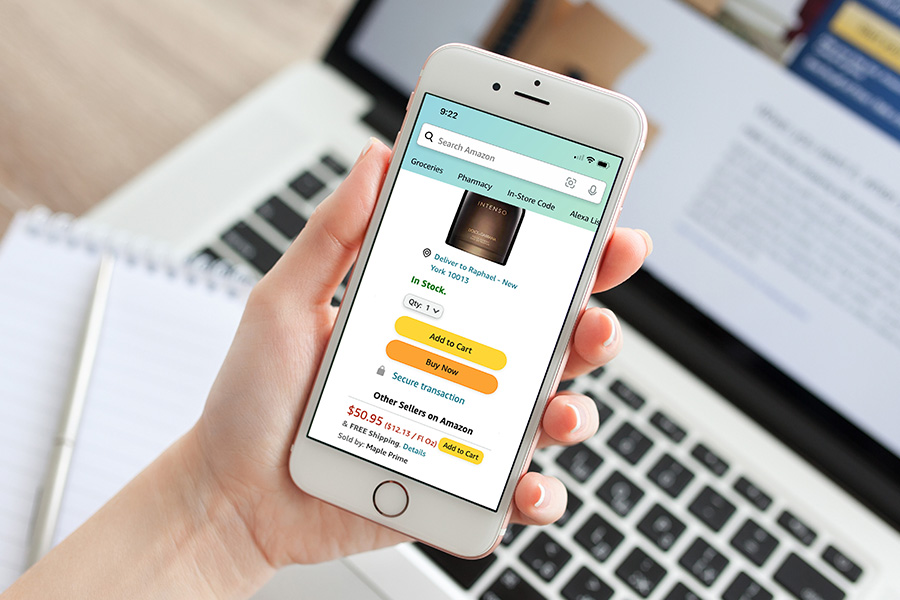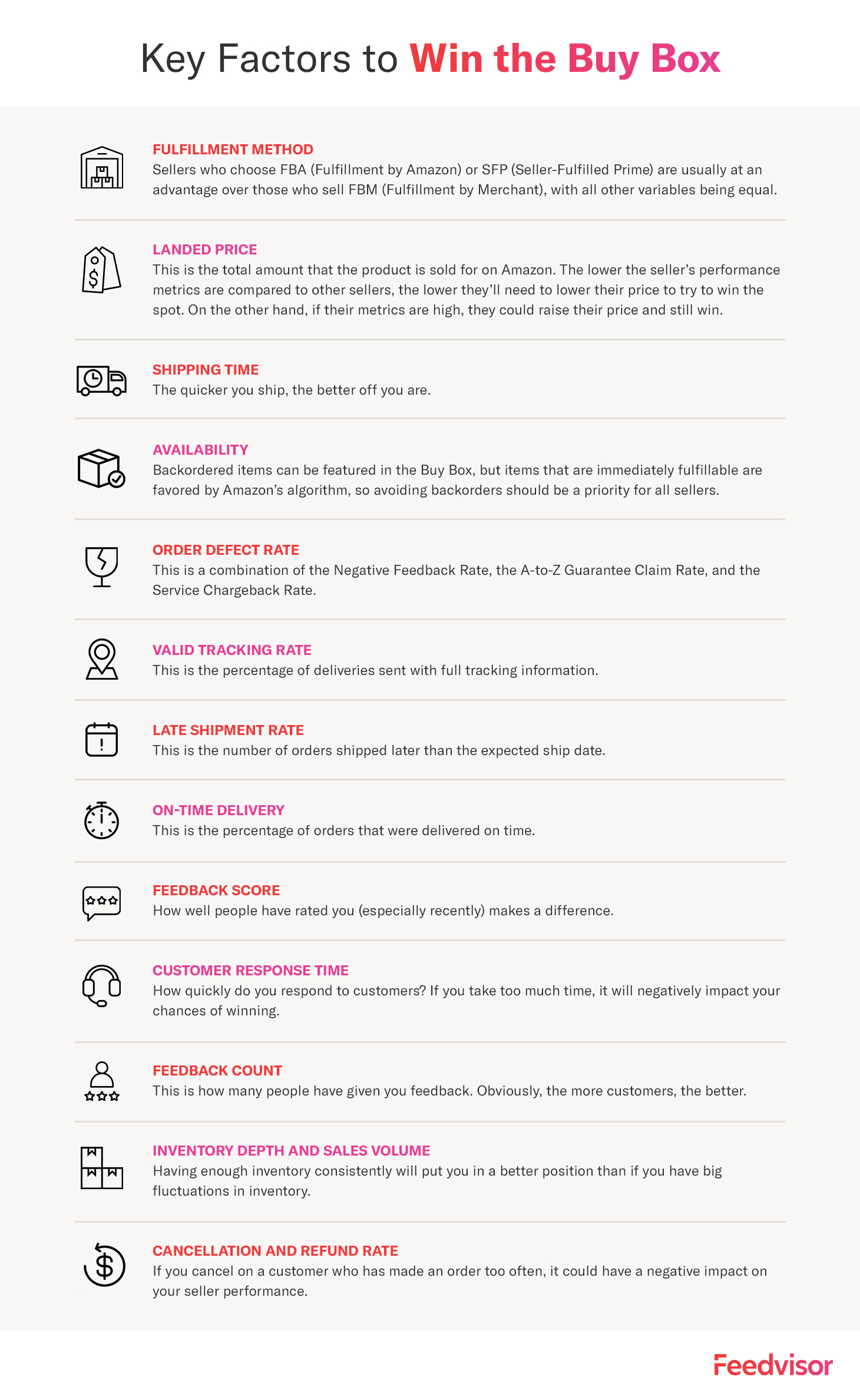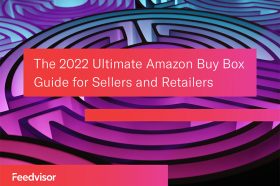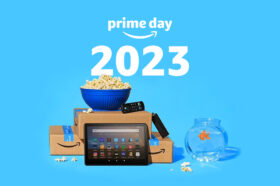University - Winning the Buy Box
Amazon Buy Box

Understanding the ins and outs of the Amazon Buy Box will always be a top priority for competitive third-party sellers
Everyone wants to know the secret to unlocking Amazon’s Buy Box formula because they want to know how to win the Buy Box most effectively. Unfortunately, very few people are privy to it, and those people just so happen to sit in the elite inner circle of Amazon.
Table of Contents
- What is the Amazon Buy Box?
- Why is the Buy Box Important?
- Are you Eligible?
- Key Factors to Win the Buy Box
- Myths and Misconceptions About the Box
- How Does the Algorithm Work?
- Software Tools That Can Enable Buy Box Optimization
What is the Amazon Buy Box?
E-commerce is predicted to account for 17% of all U.S. retail sales by 2022. With Amazon at the helm of the industry, it’s go-time for sellers to get on board with several aspects of online retail such as digital marketing, optimizing for mobile, business process automation, and establishing a brand that can endure the test of time in order to stay in the game.

However, understanding the ins and outs of this little white box will always be a top priority for competitive third-party sellers due to its high impact on conversions. As there is no limit on the number of sellers or the number of products that they can offer on Amazon’s marketplace, the same product is often sold by many sellers, each competing for the maximum amount of sales.
Most consumers buy items through the Buy Box section on the desired product page. When a consumer buys the product through this section, the seller, which is highest ranked by Amazon at that time, will show up there.
The winner will go on to make more sales than any other seller for that product (unless, of course, there are multiple high-ranked sellers – then, they will rotate in the Buy Box, each gaining their share of product sales).
Aligning with Amazon’s customer-obsessed mantra, the Amazon Buy Box was created in order to give the customer the best possible value for their money. It determines which product promises the best balance of high seller performance and low price.
Maximize Your Buy Box Share With Feedvisor's 14-Day Free Trial
Professional sellers who have met all of the performance-based qualifications are Buy Box-eligible (formally known as Featured Merchant).
Why is the Buy Box Important?
With over 83% of sales made on Amazon coming through the Buy Box, it is a treasured spot that directly impacts profitability, especially for sales on mobile, as only the name of the winner is displayed.
Understanding the Buy Box and its competition for certain products has been and will continue to be an essential strategy for most sellers.
The Buy Box is the white box on the right-hand side of the Amazon product detail page used for customers to purchase items in their cart. Amazon shows the product of a high-performance seller with the most competitive price.

This box has a high impact on conversions, which is why it is a goal for most competitive sellers.
If there are multiple high-ranked sellers for a specific product, the sellers will rotate in the Buy Box.
Because numerous merchants can sell the same item, this position can be very competitive.
What is the catch? Not all sellers are eligible to win the Buy Box. Read on to learn how to become qualified for the position and the key factors that go into winning spot.
Further Reading: How to Increase Your Amazon Sales When You Already Own the Box
The Amazon Buy Box algorithm shifts depending on the product and category.
Are You Buy Box Eligible?
Professional sellers who have met all of the performance-based qualifications are Buy Box-eligible (formally known as Featured Merchant). This status usually operates by account, but it can also operate on a category-to-category basis instead.
There is no additional fee for a seller to become eligible; however, the seller must maintain high levels of performance. Low-performance ratings put the seller at risk of losing his Buy Box-eligible status.
The listings of eligible sellers will compete for the spot in the Box, and if they do not win it, the same listing is considered for placement in the section called More Buying Choices. Although Amazon does not guarantee placement in either of these sections, an eligible seller is the only type of seller who has a chance of being featured.
Professional sellers who have met all of the performance-based qualifications are Buy Box-eligible (formally known as Featured Merchant).
Eligible Status Qualifications
The performance criteria that possible Buy Box-eligible status relies on are subject to change and vary by category. Because of this, there are no specific guidelines the seller can follow in order to make Buy Box-eligible status.
- Order Defect Rate (ODR). ODR is based on customer feedback, A-to-Z Guarantee claims, and chargebacks.
- Seller metrics. Sellers may become Buy Box-eligible based on the metrics found under the seller performance measurements.
- Customer experience. A seller may gain eligible status based on the speed of delivery, options for shipping, competitive pricing, participation in FBA, and customer service.
- Seller seniority and experience. The length of time and frequency of sellers using the Amazon platform to sell products will affect their eligible status.
- Pro Merchant status. A seller’s professional seller status will influence his status as Box-eligible.
Whereas prior to Amazon’s changes, anyone could see who was eligible (formally known as Featured Merchant) simply by looking at the Offer Listing Page, this information is now only disclosed to the seller within their Seller Central account.
To be eligible, the seller must meet very high standards; excelling in the different qualifying areas is the best way to achieve Buy Box-eligible status.
Seller performance metrics can be improved in a number of different ways:
- Accurate listing. The seller must carefully select a title, description, and categorization for items and properly select item conditions to avoid customer confusion.
- Accurate shipping. Shipping items in accordance with fulfillment procedures to ensure the customer that the correct item is being shipped.
- On-time shipping. Shipping orders in a timely manner and meeting all estimated delivery dates, especially during holidays, is critical to obtaining high ratings and earning Buy Box-eligible status. To become eligible, the seller will confirm shipment to avoid dissatisfaction and possible canceled orders. In regard to timing, it is necessary to maintain constant communication with the buyer.
- Communication with customers. Communication with the customer throughout the entire process is one of the best ways the seller can build and gain trust with customers. Notify customers when anything changes with an order, especially if the order is delayed for any reason.
New sellers eager to acquire eligibility can speed up the process by selling some items through Amazon’s own fulfillment services (FBA). Selling even a small number of popular products at a competitive price through Amazon can enable the seller to receive Buy Box Eligible status even on those items not Fulfilled By Amazon.
If a seller believes they have met all the required criteria and have not been awarded eligible status, they can contact Amazon seller support directly to request they be considered for this status.
Here are the steps to see if you are Eligible:
- Click on the Inventory tab in your Amazon Seller Central and select Manage Inventory.
- Click on the Preferences tab.
- In the Column Display section, locate the field for Buy Box Eligible.
- Select “Show When Available” from the drop-down menu.
- Then, when looking at a particular SKU, if you are eligible for the Box, it will say “Yes” in the Buy Box Eligible column, and if you are not eligible, it will say “No.”
Note: the seller may see that they are eligible to win the Buy Box for some products but not for others.
Learn more about Amazon’s Buy Box eligibility requirements.

Key Factors to Win the Buy Box on Amazon
Amazon uses an algorithm for the Buy Box that includes multiple factors to determine the best value to customers. The algorithm shifts depending on the product and category, which is why you see a variety of sellers winning for different products and categories.
If you have near-perfect performance metrics for the following factors, you will be able to price your product higher while still maintaining your spot.
That is why it is important to focus on all of the following factors when improving your possibility of winning the coveted spot.
1. Fulfillment Method:
Sellers who choose FBA (Fulfillment by Amazon) or SFP (Seller-Fulfilled Prime) are usually at an advantage over those who sell FBM (Fulfillment by Merchant), with all other variables being equal.
Further Reading: Which Is Right for You, Amazon FBA, FBM, or SFP?
2. Landed Price:
This is the total amount that the product is sold for on Amazon. The lower the seller’s performance metrics are compared to other sellers, the lower they’ll need to lower their price to try to win the spot. On the other hand, if their metrics are high, they could raise their price and still win.
3. Shipping Time:
The quicker you ship, the better off you are.
4. Availability:
Backordered items can be featured in the Buy Box, but items that are immediately fulfillable are favored by Amazon’s algorithm, so avoiding backorders should be a priority for all sellers.
5. Order Defect Rate:
This is a combination of the Negative Feedback Rate, the A-to-Z Guarantee Claim Rate, and the Service Chargeback Rate.
6. Valid Tracking Rate:
This is the percentage of deliveries sent with full tracking information.
7. Late Shipment Rate:
This is the number of orders shipped later than the expected ship date.
8. On-Time Delivery:
This is the percentage of orders that were delivered on time.
9. Feedback Score:
How well people have rated you (especially recently) makes a difference.
10. Customer Response Time:
How quickly do you respond to customers? If you take too much time, it will negatively impact your chances of winning.
11. Feedback Count:
This is how many people have given you feedback. Obviously, the more customers, the better.
12. Inventory Depth and Sales Volume:
Having enough inventory consistently will put you in a better position than if you have big fluctuations in inventory.
13. Cancellation and Refund Rate:
If you cancel on a customer who has made an order too often, it could have a negative impact on your seller performance.
Although lowering prices always increase one’s chances of winning the Buy Box, the claim that a certain equation will guarantee the Buy Box certainly holds no truth.
Myths and Misconceptions About the Buy Box
A plethora of articles have been written about how to outsmart the little white Box, and while many of them might work in specific situations, these are generally oversimplified, outdated, or just plain wrong. Below are the most commonly spread misconceptions.
Lowest Price Point Manipulations
This theory claims that if a seller undercuts the lowest competition by a certain percentage and then takes off an extra penny, they will always win the Buy Box. After testing this theory extensively with multiple products, at multiple price points, and in multiple categories, it is evident that this is not a fixed rule.
The idea may have gained popularity because when it was tested on low-end products, it created a lot of false positives.
Although lowering prices always increase one’s chances of winning the spot in the little white box, the claim that a certain equation will guarantee the spot certainly holds no truth. Continually lowering the price creates price wars between sellers, driving down profit margins on all sides.
The 2% Rotation Rule
Another false assumption is that if a seller’s price is within 2% (or other percentages) of the current Buy Box winner, that seller is guaranteed to win the spot at least a certain percentage of the time as the spot rotates between sellers.
Again, there is no evidence to support this theory. Although it does often work when tested, this is another example of false positives.
Buy Box rotations do exist, but this has nothing to do with “the 2% rule.”
While rotations are certainly an integral part of the Buy Box, to assume that they can be manipulated entirely by price has been proven wrong time and time again.
The Buy Box algorithm takes into account many data points including the current market conditions
How Does the Algorithm Work?
There is no quick fix to winning the Buy Box. Winners are determined by a complex, machine-learning algorithm that takes millions of data points into consideration. It is up to sellers to stay ahead of any potential issues in order to guarantee themselves the highest chance to win.
It does not take a simple formula to work out how to win the spot. Rather, the formula is a complex and multi-faceted algorithm.
The Amazon Buy Box algorithm takes into account many data points and layers of information gathered about the marketplace, current market conditions, and every seller with the purpose of giving the customer the best value for their money.
It’s too simplistic to say that the only thing the algorithm takes into account is price. In actuality, it determines which product offering promises the best balance of high seller performance and low price.
This has always been Amazon’s goal, offering the best possible experience to their customers. They even describe themselves as “customer obsessed.” Therefore, it is simply not possible that the formula would only take price into account, as some theories suggest.
While none of us are likely to ever know the exact Buy Box algorithm, we do know the following:
- The data-fueled algorithm takes each eligible seller and breaks their performance down into many different variables. It then evaluates each one relative to the other sellers offering the same product and decides which seller offers the best overall value to the customer.
- The weights assigned to each variable can change on a product-by-product or a category-by-category basis, so even though a seller could be losing to a competitor on one product, the same seller could be beating that same competitor on another unrelated product.
For example, for time-conscious products such as birthday cards, the shipping time may matter more than other variables. Therefore, a seller who has a shipping time of one day may have an advantage over a seller who ships in three days. For other products, such as kitchenware, shipping time may have less of an impact.
Every seller should focus on spending their energy and resources beefing up the variables that matter to Amazon as much as they can.
Software Tools That Can Enable Buy Box Optimization
Amazon’s highly sought-after spot is the most attractive piece of online marketplace real estate. Aiming to win this center-stage position can sometimes pose a bit of a challenge, but there are multiple forms of Amazon Buy Box software that can help sellers succeed.
Feedback Tools for the Buy Box
Good feedback is a very important factor in winning the winning spot, and the more recent the feedback, the greater its impact. For this reason, it’s important for sellers to always strive for quality customer service, prompt resolution to any issues, and professionalism.
Trying to encourage your customers to give you feedback about their buying experience at all is difficult. The vast majority of customers simply don’t take the time to do it.
FeedbackGenius and FeedbackFive are two tools that aid sellers in the feedback process. They send automatic and customized reminders to customers and allow for the monitoring of negative feedback. This saves the seller time, avoids unnecessary hassle, and hopefully improves all of the feedback-related customer metrics.
Shipping Tools
Shipping time has a high impact on the spot and is even more crucial for time-sensitive products and perishable goods. Delivering your products promptly and efficiently is therefore crucial to online business success.
Whether you use FBA, FBM, or SFP, there are companies out there that can help you optimize the shipping process.
ShipWorks connects to your seller account and downloads each order. It then creates shipping labels, processes invoices, manages customer tracking information, and updates the online status of each order. ShipStation is a similar company, enabling sellers to create personalized packing slips as well as branded labels.
Feedvisor’s Amazon Buy Box Playbook has become the favorite resource for Amazon sellers aiming to secure your position. Get your free copy now!
How Does Feedvisor Help Win the Buy Box?
In order to stand out in Amazon’s crowded and hyper-competitive marketplace, sellers need to be constantly dialed into the latest policies, market trends, and advertising mediums. Additionally, sellers need to have a per-item pricing strategy in order to make sure that they don’t lose money where they could be making it.
Price heavily impacts the Buy Box, and therefore getting to the right price is crucial.
With that, Feedvisor offers AI-based pricing technology for Amazon sellers and brands. Essentially, the tool automatically changes sellers’ product prices according to the dynamic and constant changes in the market.
Through self-learning algorithms that continuously improve and learn from each individual situation, the algorithms will find the best prices for your products, helping you maximize sales and overall profits without running the risk of human error.



